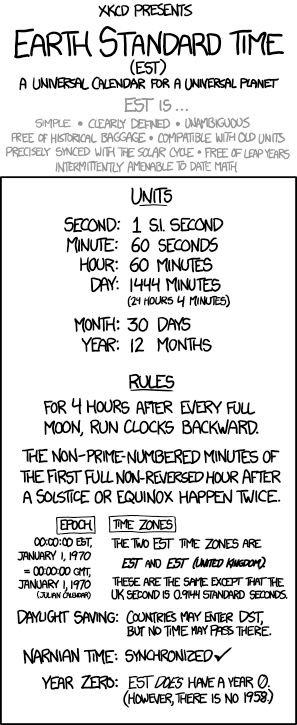At least two of those are wrong.
[doublepost=1521856662,1521856611][/doublepost]
As I said, they don't perfectly match up.
Source:
https://en.wikipedia.org/wiki/Yard
Fact 1: The
Proto-Germanic cubit or arm's-length has been
reconstructed as *
alinâ, which developed into the Old English
ęln, Middle English
elne, and modern
ell of 1¼ yd.
Fact 2: Subsequent measurements revealed that the yard standard and its copies were shrinking at the rate of one part per million every twenty years due to the gradual release of strain incurred during the fabrication process.
Ergo: At some point in time it would make the statement true. Also note that if we take our time measurement of 2 months, and multiply it by 1*2*3*4*5 we get.... hang on.... 20 years.
When was the last time, it was used as a moon phase cycle? There twelve of them every year and coincidentally the first starts with the year and the last ends with the year.
True, true with our Julian Calendar. But....
The
Babylonian calendar was a
lunisolar calendar with years consisting of 12
lunar months, each beginning when a new
crescent moon was first sighted low on the western horizon at sunset,
plus an intercalary month inserted as needed by decree. The calendar is based on a Sumerian (
Ur III) predecessor preserved in the
Umma calendar of
Shulgi (c. 21st century BC).
The
Hebrew or
Jewish calendar (הַלּוּחַ הָעִבְרִי,
Ha-Luah ha-Ivri) is a
lunisolar calendar used today predominantly for
Jewish religious observances.....the calendar employed a new
crescent moon, with an additional month normally added every two or three years
to correct for the difference between twelve lunar months and the solar year.
Source:
https://en.wikipedia.org/wiki/Babylonian_calendar
https://en.wikipedia.org/wiki/Hebrew_calendar
Note that "
plus an intercalary month inserted as needed by decree."... which might explain the 3 months Pyra news hiatus now and then.
/tongue-in-cheek



